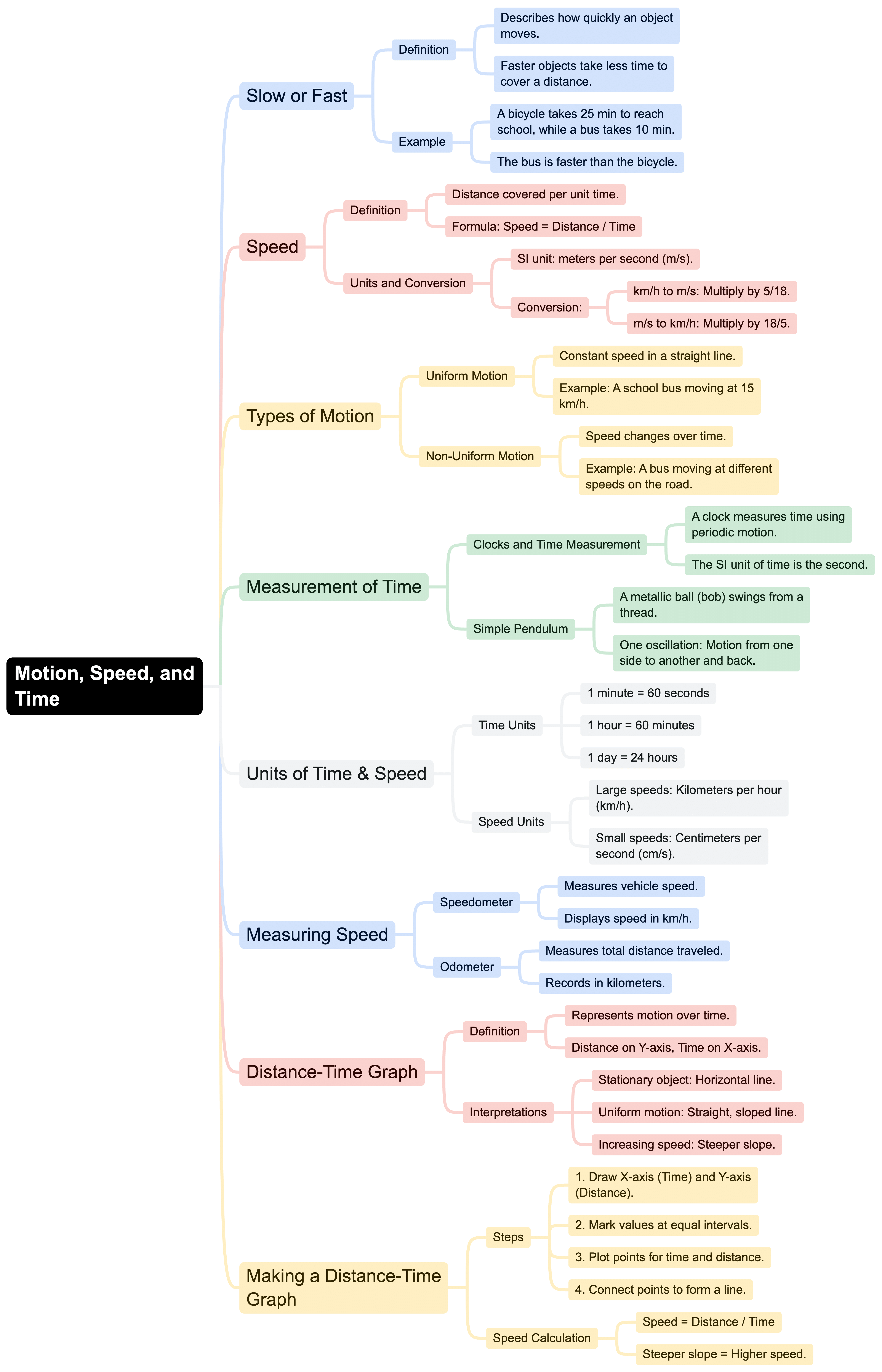Class 7 Exam > Class 7 Notes > Science Class 7 (Old NCERT) > Mind Map: Motion and Time
Mind Map: Motion and Time | Science Class 7 (Old NCERT) PDF Download

The document Mind Map: Motion and Time | Science Class 7 (Old NCERT) is a part of the Class 7 Course Science Class 7 (Old NCERT).
All you need of Class 7 at this link: Class 7
|
111 videos|435 docs|28 tests
|
FAQs on Mind Map: Motion and Time - Science Class 7 (Old NCERT)
| 1. What is the definition of motion and how is it classified? |  |
Ans.Motion is defined as the change in position of an object with respect to time. It is classified into different types based on various factors such as the direction of motion, the nature of the path, and the speed of the object. The main classifications include linear motion, rotational motion, translational motion, and periodic motion.
| 2. How do we measure time, and what are some common instruments used? |  |
Ans.Time is measured using various instruments that help quantify the duration of events. Common instruments include clocks and watches, which use mechanical or electronic means to keep track of time. Other devices like stopwatches are used for measuring shorter time intervals, while sundials and hourglasses are traditional methods that utilize natural phenomena.
| 3. What is the relationship between speed, distance, and time? |  |
Ans.The relationship between speed, distance, and time can be expressed by the formula: Speed = Distance / Time. This means that speed is determined by how far an object travels (distance) in a given period (time). Understanding this relationship is crucial for solving motion-related problems and making predictions about an object's movement.
| 4. What are the different types of speed encountered in motion studies? |  |
Ans.In motion studies, speed can be categorized into various types, including uniform speed, where an object covers equal distances in equal intervals of time, and variable speed, where the distance covered varies with time. Additionally, average speed, which is total distance divided by total time, and instantaneous speed, which is the speed of an object at a specific moment, are also important concepts.
| 5. How does acceleration relate to motion, and what are its types? |  |
Ans.Acceleration is defined as the rate of change of velocity with respect to time. It indicates how quickly an object is speeding up or slowing down. There are several types of acceleration: uniform acceleration, where the velocity changes at a constant rate, and non-uniform acceleration, where the rate of change varies. Understanding acceleration is vital in analyzing dynamic motion and the forces acting on objects.
Related Searches
















